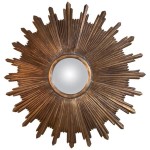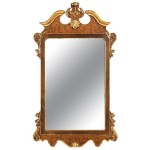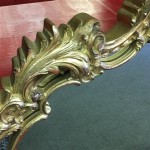Antique Vanity With Mirror and Bench: A Comprehensive Guide
An antique vanity with a mirror and bench represents more than just a piece of furniture; it embodies history, craftsmanship, and a timeless aesthetic. These vanities, often referred to as dressing tables or boudoirs, offer a glimpse into past eras, reflecting the styles and sensibilities of their time. Owning an antique vanity can be a rewarding experience, but understanding their history, characteristics, and how to care for them is crucial.
The term "antique" generally refers to an item at least 100 years old, though this can be a subjective definition. When considering an antique vanity, it is important to examine its provenance, materials, and construction techniques to determine its authenticity and value. These pieces often feature intricate details and are constructed with high-quality materials that are no longer commonly used in modern furniture production.
The appeal of an antique vanity lies not only in its age but also in its unique character. Each vanity tells a story, carrying the marks of time and the traces of its previous owners. This history adds depth and personality to any room, making it a focal point that sparks conversation and evokes a sense of nostalgia.
Understanding the History and Styles of Antique Vanities
Antique vanities have evolved significantly over the centuries, with different styles reflecting the prevailing artistic and design trends of their respective periods. These styles can be broadly categorized into eras, each with its distinct characteristics.
Victorian Era (1837-1901): Victorian vanities are often characterized by their ornate detailing, heavy carvings, and rich, dark woods such as mahogany and walnut. They frequently feature elaborate mirrors, multiple drawers, and intricate hardware. Details like floral motifs, cabriole legs, and decorative pulls are common. The overall aesthetic is one of opulence and grandeur, reflecting the Victorian era's emphasis on ornamentation and formality.
Edwardian Era (1901-1910): Edwardian vanities represent a transition away from the heavier styles of the Victorian era. They tend to be lighter and more graceful, with a focus on elegance and simplicity. Common materials include lighter woods like satinwood and birch, often embellished with inlays of contrasting woods or mother-of-pearl. Mirrors are typically larger and more streamlined, and the overall design emphasizes functionality as well as beauty.
Art Deco Era (1920s-1930s): Art Deco vanities embody the glamour and modernity of the Jazz Age. They are characterized by geometric shapes, streamlined designs, and luxurious materials such as exotic woods, chrome, and mirrored glass. Vanities from this period often feature bold colors, asymmetrical compositions, and decorative elements inspired by industrial design and ancient cultures. The emphasis is on sleekness, sophistication, and a sense of forward-thinking innovation.
Mid-Century Modern Era (1940s-1960s): Mid-Century Modern vanities are defined by their clean lines, minimalist forms, and functional design. They typically feature simple, unadorned surfaces, tapered legs, and a focus on natural materials like wood and plywood. Common woods include teak, walnut, and birch, often finished with a clear coat to showcase the wood's natural grain. The emphasis is on practicality and understated elegance, reflecting the Mid-Century Modern movement's emphasis on functionality and simplicity.
Identifying the style of an antique vanity is crucial for determining its age, value, and appropriate restoration techniques. By understanding the characteristics of each era, collectors and enthusiasts can gain a deeper appreciation for the history and craftsmanship embodied in these pieces.
Key Features and Materials of Antique Vanities
Beyond style, the key features and materials used in constructing an antique vanity play a significant role in its value and overall appeal. Examining these aspects can provide insights into the craftsmanship and artistry of the piece.
Wood Types: The type of wood used in an antique vanity can indicate its quality and historical significance. As mentioned earlier, Mahogany and walnut were commonly used in Victorian vanities, known for their rich color and durability. Lighter woods like satinwood, maple, and birch were favored in the Edwardian era, offering a lighter and more delicate aesthetic. Art Deco pieces might feature exotic woods like Macassar ebony or rosewood, reflecting the era's penchant for luxury and global influences. Mid-Century Modern vanities often utilized teak, walnut, and birch plywood, showcasing the era's focus on functionality and material efficiency.
Mirrors: The mirror is an integral part of an antique vanity, and its design and condition can greatly impact the piece's overall value. Early mirrors were often handmade using blown glass and mercury backing, which can result in imperfections and slight distortions. Victorian vanities typically feature large, ornate mirrors with elaborate frames. Edwardian mirrors tend to be more streamlined and elegant, while Art Deco mirrors often incorporate geometric shapes and mirrored glass panels. The condition of the mirror is crucial; silvering loss, scratches, and cracks can detract from the vanity's value, though some degree of wear is expected in antique mirrors.
Hardware: The hardware on an antique vanity, including drawer pulls, knobs, and hinges, can provide valuable clues about its age and origin. Early hardware was often handmade and features intricate designs and detailing. Victorian vanities frequently feature ornate brass or bronze hardware, while Edwardian pieces may have simpler, more elegant designs. Art Deco hardware might incorporate geometric shapes and chrome finishes. Original hardware is highly desirable, as it contributes to the authenticity and integrity of the piece. Replacing missing or damaged hardware with period-appropriate replacements can enhance the vanity's aesthetic and value.
Construction Techniques: Understanding the construction techniques used in an antique vanity can provide insights into its quality and durability. Dovetail joints, which are interlocking joints used to connect drawers and other components, are a hallmark of high-quality craftsmanship. Hand-carved details, such as floral motifs or cabriole legs, indicate a higher level of artistry and skill. The use of solid wood construction, as opposed to veneers or composites, is another indicator of quality. Examining the construction techniques can help assess the overall condition and value of the piece.
By carefully examining these key features and materials, collectors and enthusiasts can gain a deeper understanding of the craftsmanship and historical significance of antique vanities.
Caring for and Restoring Antique Vanities
Preserving an antique vanity requires careful attention and appropriate restoration techniques. Proper care can help maintain its beauty and value for generations to come.
Cleaning and Maintenance: Regular cleaning is essential for maintaining the appearance and condition of an antique vanity. Dust the vanity regularly with a soft, lint-free cloth to prevent the accumulation of dirt and grime. Avoid using harsh chemicals or abrasive cleaners, as these can damage the finish. For wood surfaces, a gentle wood cleaner or polish can be used sparingly to remove fingerprints and light stains. For mirrors, use a glass cleaner specifically designed for antiques, avoiding excessive moisture that can damage the silvering. Always test any cleaning product on an inconspicuous area first to ensure it does not cause damage.
Repairing and Restoring: Damaged or worn antique vanities may require more extensive repair or restoration. Minor repairs, such as tightening loose joints or replacing missing hardware, can often be done by the owner. However, more complex repairs, such as repairing damaged veneer or refinishing the wood, should be entrusted to a qualified antique restoration specialist. Refinishing an antique vanity can significantly alter its appearance and value, so it's crucial to consider the historical significance of the piece and the impact of any restoration efforts. A skilled restorer will strive to preserve the original finish and character of the vanity while addressing any structural or cosmetic issues.
Protecting from Damage: To prevent damage to an antique vanity, it's essential to protect it from environmental factors such as excessive humidity, sunlight, and temperature fluctuations. Keep the vanity away from direct sunlight, as this can fade the finish and damage the wood. Maintain a consistent humidity level in the room to prevent warping or cracking. Avoid placing heavy objects on the vanity's surface, as this can cause stress and damage. Use coasters or placemats to protect the surface from spills and scratches. Regularly inspect the vanity for signs of damage, such as cracks, loose joints, or insect infestations, and address any issues promptly.
Professional Restoration: When considering professional restoration, it is essential to choose a reputable and experienced restorer who specializes in antique furniture. A qualified restorer will have the knowledge and skills to assess the condition of the vanity, develop an appropriate restoration plan, and execute the work with care and sensitivity. They will also use period-appropriate materials and techniques to ensure that the restoration is consistent with the vanity's historical character. Before entrusting a restorer with your antique vanity, ask for references, review their portfolio, and discuss the proposed restoration plan in detail.
By following these guidelines for caring for and restoring antique vanities, owners can ensure that these pieces remain beautiful and valuable for many years to come. Preserving the history and craftsmanship of these pieces is a worthwhile endeavor that allows future generations to appreciate their unique character and beauty.

White And Gold Vintage Vanity With Mirror Bench Gift For Women Girl Casters Bedroom Sets Furniture

Sold 1920s Antique Vanity With Mirror And Stool Dressing Table

Lovely Deco Waterfall Vanity Mirror And Bench Art Bedroom

Vintage Vanity With Mirror And Bench

Vanity Dresser With Long Trifold Mirror Antique Victorian Bench Stunning

Early 20th Century Antique Vanity Desk With Trifold Mirror And Cane Seat Bench By The Rushville Furniture Co Of Na Set 2 Chairish

Trifold Vanity Transformation A Makeover To See Prodigal Pieces
New Rare Antique Vanity With Mirror And Bench Vintage Forever Pink Glen Mills Pa

Vanity Dresser Mirror And Stool Griswold Guest Company Wood Desk Dressing Table Solid Furniture

Warm Cherry Vanity Mirror Bench 1 City Market








